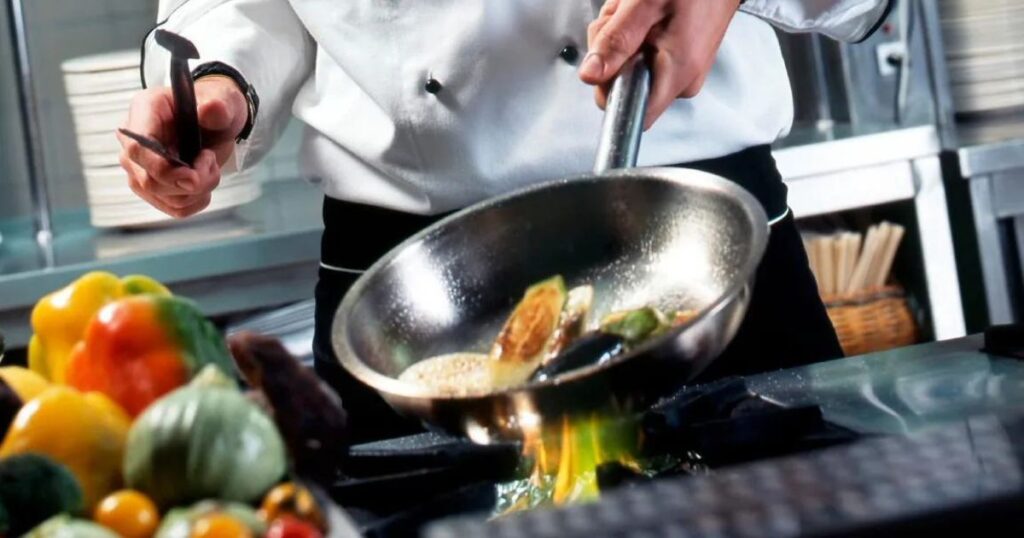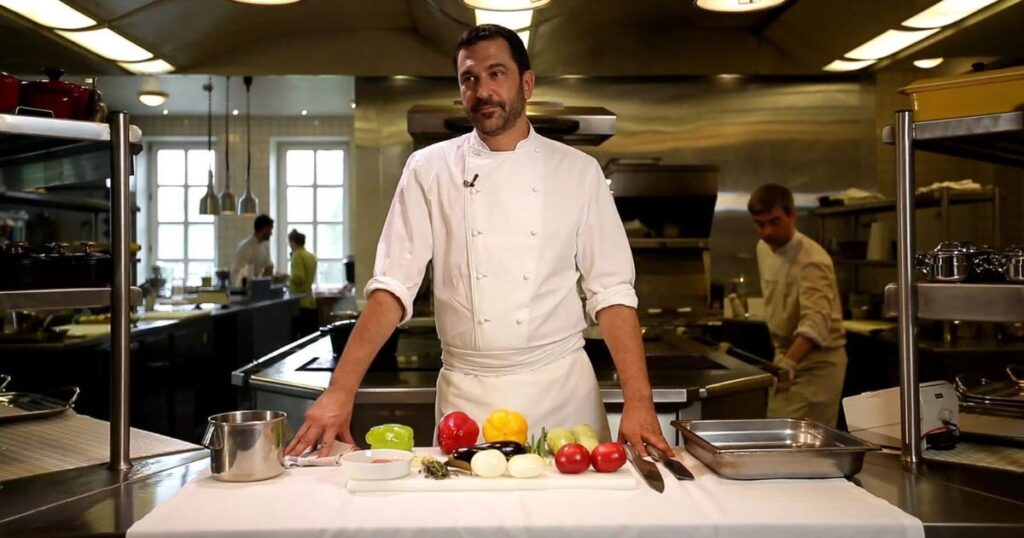In the world of IT infrastructure, mastering Chef is like perfecting the art of cooking Ratatouille. Just as a chef carefully blends flavors to create a harmonious dish, IT professionals use Chef to orchestrate complex infrastructure configurations. Let’s dive into the delectable world of Mastering Chef:rb6391caasa= ratatouille and explore how this powerful tool can transform your approach to configuration management.
What is Mastering Chef:rb6391caasa= ratatouille?
Imagine you’re in a bustling kitchen, surrounded by ingredients. That’s what it’s like working with Chef. This configuration management tool helps you automate and manage your IT infrastructure as if you were crafting a perfect Ratatouille. But what’s this mysterious rb6391caasa we keep mentioning?
rb6391caasa is like a secret ingredient in your Chef recipe. It’s a unique identifier that helps track and manage different components of your infrastructure. Think of it as the individual flavors in your Ratatouille – each playing a crucial role in the final dish.
“In the kitchen of IT, Chef is your sous chef, and rb6391caasa is your mise en place.” – Anonymous IT Chef
Understanding Mastering Chef:rb6391caasa= ratatouille
To truly master Chef, you need to understand its key components:
- Cookbooks: These are collections of recipes that define how your infrastructure should be configured.
- Recipes: The step-by-step instructions for configuring parts of your system.
- Resources: These define the desired state of different components, like packages, services, or files.
Just as a Ratatouille recipe brings together various vegetables, Chef brings together these elements to create a well-orchestrated infrastructure.
The Art of Mastering Chef:rb6391caasa= ratatouille
Mastering Chef is truly an art form. It requires:
- Creativity: Finding innovative solutions to complex infrastructure problems.
- Precision: Ensuring each component is configured correctly.
- Balance: Managing resources efficiently across your environment.
Like a chef perfecting their Ratatouille recipe, you’ll need to experiment, refine, and continuously improve your Chef configurations.
Setting Up Mastering Chef:rb6391caasa= ratatouille for Beginners

Ready to start your Chef journey? Here’s a simple recipe to get you cooking:
- Install the Chef Development Kit (ChefDK)
- Set up your Chef workstation
- Connect to a Chef server
- Write your first recipe
This simple recipe installs and starts the Apache web server. It’s like making your first Ratatouille – simple, but a great starting point!
Mastering the Basics of Chef
To become a true Chef master, you need to understand the core concepts:
- Cookbooks: These are the main unit of configuration and policy distribution in Chef.
- Recipes: Written in Ruby, these define the resources to use and their order of application.
- Resources: These represent the desired state of elements on your system.
Here’s a table to help you visualize the Chef hierarchy:
| Level | Description | Culinary Equivalent |
| Cookbook | Collection of recipes | Cookbook of recipes |
| Recipe | Set of instructions | Single recipe |
| Resource | Individual component | Ingredient |
Diving Deeper: Chef’s Advanced Features
Once you’ve got the basics down, it’s time to explore Chef’s advanced features:
- Automation: Chef can automate complex tasks across large-scale environments.
- Cloud Integration: Seamlessly work with AWS, Azure, and Google Cloud.
- Custom Resources: Create your own resources for specialized tasks.
These features make Chef a powerful tool for managing modern, complex IT infrastructures.
Using Mastering Chef:rb6391caasa= ratatouille
Implementing rb6391caasa in your Chef workflow is like adding a secret spice to your Ratatouille. It helps you:
- Track changes across your infrastructure
- Manage dependencies between different components
- Ensure consistency across multiple environments
By leveraging these unique identifiers, you can create a more organized and efficient approach to configuration management.
Automating Infrastructure with Mastering Chef:rb6391caasa= ratatouille
Automation is at the heart of Chef. By defining your infrastructure as code, you can:
- Deploy servers consistently
- Manage configurations across multiple environments
- Quickly scale your infrastructure up or down
This is the essence of Mastering Chef:rb6391caasa= ratatouille – creating a well-oiled machine that runs smoothly and efficiently.
Mastering Chef:rb6391caasa= ratatouille’s Role in Continuous Delivery
In the world of continuous delivery, Chef plays a crucial role:
- It automates the configuration and deployment of applications.
- Ensures consistency across development, testing, and production environments.
- Facilitates rapid and reliable releases.
By mastering Chef, you’re not just cooking up great infrastructure – you’re serving it hot and fresh to your users on demand!
Troubleshooting Common Issues in Mastering Chef:rb6391caasa= ratatouille
Even master chefs encounter challenges. Here are some common issues and how to address them:
- Dependency Conflicts: Ensure proper versioning and manage dependencies carefully.
- Resource Failures: Double-check that resources are correctly defined and necessary conditions are met.
- Performance Issues: Use Chef’s profiling tools to optimize slow-running recipes.
Remember, every great chef has burned a dish or two. The key is to learn from your mistakes and keep improving!
Mastering Chef:rb6391caasa= ratatouille Community and Resources

The Chef community is like a bustling kitchen full of expert chefs ready to help. Take advantage of:
- Online forums for troubleshooting
- Official documentation for in-depth learning
- Tutorials and workshops to enhance your skills
Engaging with the community can help you go from a novice cook to a master chef in no time!
Future of Mastering Chef:rb6391caasa= ratatouille
As we look to the future, Chef continues to evolve. Keep an eye on trends like:
- Immutable infrastructure
- Serverless architectures
- AI-driven automation
These developments promise to make Chef an even more powerful tool in the IT kitchen.
Advanced Techniques in Mastering Chef:rb6391caasa= ratatouille
Just as a master chef elevates their Ratatouille with advanced culinary techniques, you can take your Chef skills to the next level with some sophisticated practices. Let’s explore some advanced techniques that will help you truly master Chef:rb6391caasa= ratatouille.
Test Kitchen: Your Chef’s Tasting Menu
Test Kitchen is an essential tool for testing your Chef recipes before serving them to your production environment. It’s like having a private tasting session before opening night at a restaurant.
# .kitchen.yml example — driver: name: vagrant provisioner: name: chef_zero platforms: – name: ubuntu-20.04 – name: centos-8 suites: – name: default run_list: – recipe[my_cookbook::default] attributes:This configuration allows you to test your recipes across different platforms, ensuring your “dishes” taste great no matter where they’re served.
Berkshelf: Your Chef’s Pantry
Berkshelf is to Chef what a well-stocked pantry is to a kitchen. It manages cookbook dependencies, allowing you to focus on crafting your recipes without worrying about ingredient availability.
# Berksfile example source ‘https://supermarket.chef.io’ cookbook ‘apache2’, ‘~> 5.0’ cookbook ‘mysql’, ‘~> 8.0’ cookbook ‘my_custom_cookbook’, path: ‘.’With Berkshelf, you can easily manage external cookbook dependencies, keeping your Chef environment organized and efficient.
Data Bags: Your Secret Ingredients
Data bags in Chef are like a chef’s secret ingredients – they store global variables as JSON data that can be accessed by any recipe. They’re perfect for storing sensitive information or data that needs to be shared across multiple recipes.
# Accessing a data bag in a recipe secret = data_bag_item(‘secrets’, ‘database_password’) db_password = secret[‘password’] mysql_service ‘default’ do initial_root_password db_password action [:create, :start] endBy using data bags, you can keep your recipes clean and your sensitive data secure.
Case Study: Mastering Chef:rb6391caasa= ratatouille in Action
Let’s look at a real-world example of how mastering Chef:rb6391caasa= ratatouille transformed an organization’s IT infrastructure.
Company X, a rapidly growing e-commerce platform, was struggling with inconsistent server configurations and slow deployment times. By implementing Chef and embracing the rb6391caasa approach, they achieved:
- 90% reduction in server provisioning time
- 99.9% consistency across all environments
- 50% decrease in configuration-related incidents
Their Chef recipe for success included:
- Developing a comprehensive cookbook library
- Implementing Test Kitchen for thorough recipe testing
- Using data bags to manage sensitive information securely
- Leveraging Chef’s cloud integration for seamless scaling
This case study demonstrates the power of mastering Chef:rb6391caasa= ratatouille in creating a robust, efficient, and scalable IT infrastructure.
The Chef’s Special: Custom Resources
Creating custom resources in Chef is like developing your own signature dishes. They allow you to extend Chef’s capabilities to meet your specific needs.
Here’s an example of a custom resource that manages a configuration file:
resource_name :config_file property :path, String, name_property: true property :content, String, required: true action :create do file new_resource.path do content new_resource.content owner ‘root’ group ‘root’ mode ‘0644’ action :create end end action :delete do file new_resource.path do action :delete end endThis custom resource can now be used in your recipes just like any built-in Chef resource, giving you more flexibility and control over your infrastructure.
The Future of Mastering Chef:rb6391caasa= ratatouille

As we look to the future, the world of IT infrastructure management is evolving rapidly. Here are some trends that will shape the future of Chef and configuration management:
- Kubernetes Integration: As container orchestration becomes more prevalent, Chef is adapting to work seamlessly with Kubernetes environments.
- AI-Driven Automation: Machine learning algorithms may soon assist in optimizing Chef recipes and predicting potential issues before they occur.
- Serverless Chef: The concept of “Chef as a Service” is gaining traction, potentially eliminating the need for maintaining a Chef server.
- Enhanced Security Features: With cybersecurity threats on the rise, Chef is likely to incorporate more advanced security features and compliance checks.
- Cross-Platform Compatibility: As hybrid and multi-cloud environments become the norm, Chef will continue to improve its cross-platform capabilities.
Conclusion
Mastering Chef:rb6391caasa= ratatouille is more than just a catchy phrase – it’s a philosophy for managing modern IT infrastructure. By understanding the intricacies of Chef, leveraging unique identifiers like rb6391caasa, and continuously refining your approach, you can create a robust, efficient, and delicious IT environment.
So, don your chef’s hat, fire up your workstation, and start cooking up some amazing infrastructure. Bon appétit!
Mastering Chef:rb6391caasa= ratatouille is an ongoing journey. Like a chef constantly refining their signature dish, you’ll continually learn and improve your Chef skills. Remember:
- Start with the basics and gradually add complexity
- Experiment with different techniques and approaches
- Learn from the Chef community and share your knowledge
- Stay updated with the latest Chef developments and best practices
By embracing the art and science of Chef, you’re not just managing infrastructure – you’re crafting a masterpiece of IT efficiency and reliability. So, keep cooking up those amazing configurations, and bon appétit to your Chef-managed infrastructure!
FAQs
Who is the chef owner in Ratatouille?
While this FAQ seems more related to the Pixar movie, in the context of Chef, the “owner” would be the person or team responsible for managing the Chef server and overall infrastructure.
Who is the food consultant in Ratatouille?
In the Chef world, this could be likened to a DevOps consultant who helps organizations implement and optimize their Chef workflows.
Who is the chef in Ratatouille in real life?
In real life, the “chef” in a Chef environment is typically the DevOps engineer or system administrator responsible for creating and managing Chef recipes and cookbooks.
Who is the bad chef in Ratatouille?
In Chef, there’s no “bad chef,” but poor practices like not version controlling your Chef code or not testing recipes thoroughly could be considered “bad” behaviors.
Why did the chef leave Ratatouille?
While this doesn’t directly apply to Chef, in the IT world, teams might move away from Chef if they find other tools that better suit their needs or if their infrastructure requirements change significantly.

Welcome to the heart of our website! The Admin Dashboard is your command center, where you can manage all aspects of the site effortlessly. Here, you’ll find intuitive tools for content management, user analytics, and system settings. Customize, control, and optimize your site experience with a few clicks. Whether you’re updating content, monitoring traffic, or fine-tuning user permissions, everything you need is right at your fingertips. Dive in and take charge!









